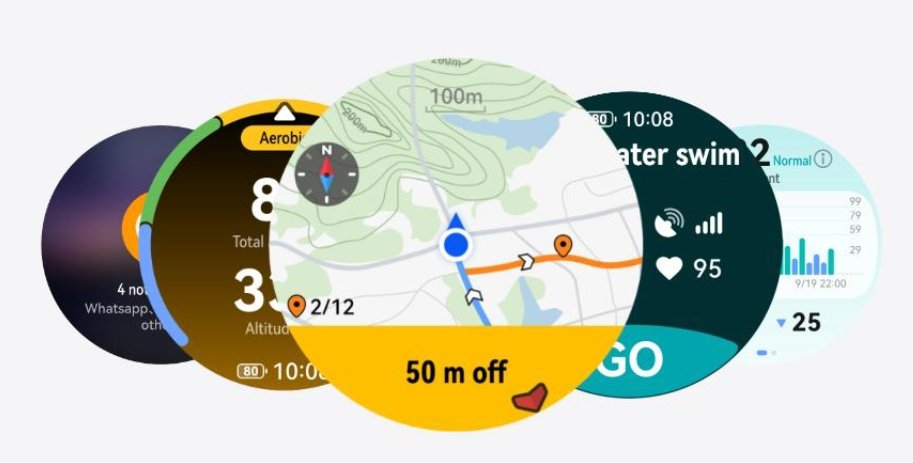Smartwatches have rapidly transformed from basic step counters to versatile devices offering health, fitness, communication, and entertainment functions. As technology progresses, smartwatches are set for exciting innovations. This blog explores the upcoming trends in smartwatch technology, highlighting new features, design advancements, and breakthroughs in health monitoring. These developments promise to further enhance their functionality, making them even more essential in daily life, while also contributing to a more sustainable and connected future.
The Role of Health and Fitness Monitoring
Health and fitness monitoring have always been at the core of smartwatch functionality. From tracking daily steps to monitoring heart rate and sleep patterns, smartwatches have become essential tools for maintaining a health-conscious lifestyle.
Current Health Features in Smartwatches
Current smartwatches offer an array of health features, including heart rate monitoring, sleep tracking, and GPS functionality for outdoor activities. Advanced models even measure blood oxygen levels and electrocardiograms (ECG). These features have set the stage for more sophisticated health monitoring tools, making it easier for users to keep tabs on their well-being.

Upcoming Health Innovations
The future promises even more advanced health monitoring capabilities. Upcoming innovations could include non-invasive glucose monitoring for diabetic users, hydration level detection, and stress measurement using heart rate variability. Additionally, expect AI-enhanced diagnostics, which could provide real-time advice or flag potential health issues before they become serious problems. Such innovations could make smartwatches indispensable for proactive health management.
Integration of AI and Machine Learning
AI and machine learning (ML) are revolutionizing the tech industry, and smartwatches are no exception. These technologies are set to enhance user experience and provide more personalized insights.
AI in Personalized User Experience
AI’s ability to analyze user data and behavior patterns enables a highly personalized smartwatch experience. By learning from habits and preferences, these devices can adapt their functionality to meet individual needs. For example, they can suggest tailored health routines, remind users to stay active, or offer insights into daily habits. The goal is to transform smartwatches from mere tools into essential personal assistants, enhancing both lifestyle and well-being.
Predictive Health Insights Through Machine Learning
Machine learning algorithms can analyze vast amounts of health data to recognize patterns and provide predictive insights. This means smartwatches could identify signs of potential health issues before they become critical. For instance, ML could predict heart anomalies or alert users to impending health risks based on their lifestyle patterns. These predictive capabilities hold the promise of revolutionizing personal healthcare by offering timely, actionable insights.
Advancements in Battery and Charging Technology
Battery life is a crucial factor for smartwatches, directly impacting their usability. Future advancements are set to make these devices more efficient and user-friendly.
Longer Battery Life and Energy Efficiency
Significant strides are being made in battery technology to extend the battery life of smartwatches. Future models may incorporate advanced lithium-ion batteries, which offer longer lifespans, or solid-state batteries that provide increased energy density. Additionally, solar charging capabilities could become a feature, allowing smartwatches to harness renewable energy, thus reducing the need for frequent recharges and improving convenience for users.
Innovative Charging Solutions
Aside from longer battery life, new charging solutions are on the horizon. Wireless and fast-charging technologies are becoming more commonplace, and some companies are exploring the use of kinetic energy as a power source. Imagine a smartwatch that charges as you move – a game-changer for wearables. These developments will ensure that smartwatches remain convenient and reliable.
Enhanced Smartwatch Designs and User Experience
Smartwatch design goes beyond aesthetics, playing a crucial role in user satisfaction and device usability. Future trends will focus on improving both the look and feel of these devices.
Evolution of Aesthetics and Customization
Expect to see an increasing range of personalized customization options, enabling users to select from a variety of watch faces, bands, and materials. As technology advances, the trend is shifting toward designing smartwatches that can be tailored to match individual preferences, allowing each user to create a personalized look. This evolution will transform the smartwatch into more than just a functional device— it will become a true fashion statement that reflects personal style.
Durability and Comfort in Materials
Material science is rapidly advancing, introducing new, more durable, and comfortable components for smartwatches. Future models will incorporate lightweight yet robust materials such as advanced polymers, ceramics, and hybrid metals. These innovations will improve the overall durability of the devices, allowing them to withstand daily wear and tear. Additionally, the use of these materials will ensure that smartwatches remain comfortable to wear for long periods, enhancing the user experience.
Conclusion
Smartwatches are set to become even more integral to our lives, with promising advancements in health monitoring, AI integration, battery life, and design. These trends point towards a future where smartwatches are not just accessories but essential tools for health, productivity, and personal expression. Staying abreast of these developments can help consumers make informed choices and fully leverage the benefits of their Smartwatches.